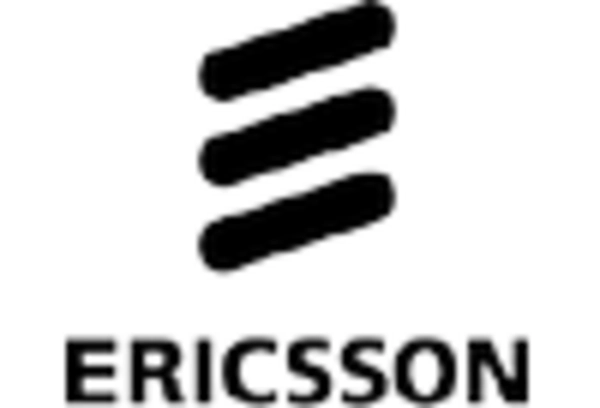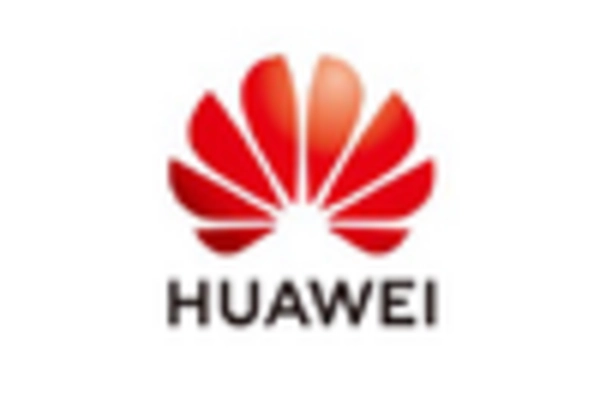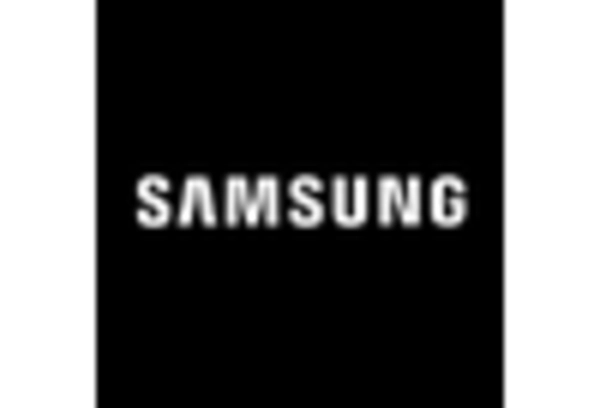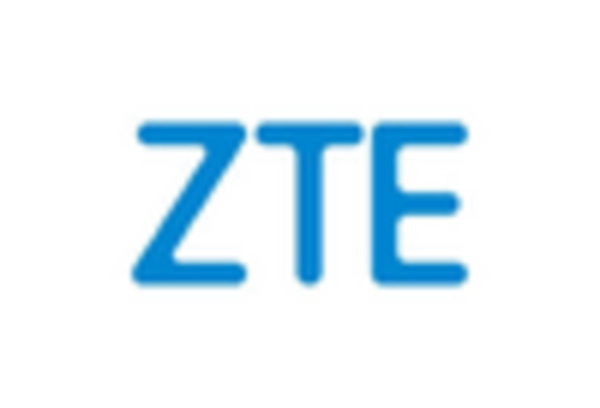Expansion of Smart City Initiatives
The expansion of smart city initiatives across Canada is driving the 5g mm-wave-technology market. Municipalities are increasingly investing in smart infrastructure to improve urban living conditions, enhance public safety, and optimize resource management. For instance, cities like Toronto and Vancouver are implementing smart traffic management systems, which rely on real-time data transmission enabled by 5g mm-wave technology. This technology supports the integration of various IoT devices, allowing for efficient communication and data exchange. As cities aim to become more connected and sustainable, the demand for high-capacity networks is expected to rise. Reports indicate that investments in smart city projects could reach upwards of $50 billion by 2030, further propelling the growth of the 5g mm-wave-technology market in Canada. The synergy between urban development and advanced telecommunications is likely to create new opportunities for market players.
Growing Demand for High-Speed Connectivity
The increasing demand for high-speed connectivity in Canada is a primary driver for the 5g mm-wave-technology market. As consumers and businesses alike seek faster internet speeds for various applications, the need for advanced telecommunications infrastructure becomes evident. According to recent data, approximately 80% of Canadian households now rely on high-speed internet, which necessitates the deployment of 5g mm-wave technology to meet these expectations. This technology offers enhanced data rates and lower latency, making it suitable for applications such as streaming, gaming, and remote work. Furthermore, the rise of smart cities and IoT devices in urban areas is likely to further fuel this demand, as these technologies require robust and reliable connectivity. Thus, the growing appetite for high-speed internet is a significant catalyst for the expansion of the 5g mm-wave-technology market in Canada.
Supportive Government Policies and Funding
Supportive government policies and funding initiatives are playing a pivotal role in the growth of the 5g mm-wave-technology market in Canada. The Canadian government has recognized the importance of advanced telecommunications infrastructure for economic development and has committed to investing in 5g technology. Programs aimed at enhancing broadband access in rural and underserved areas are likely to stimulate market growth. For instance, the government has allocated over $1 billion to improve connectivity in remote regions, which will facilitate the deployment of 5g mm-wave technology. Additionally, regulatory frameworks are being established to encourage private sector investment in telecommunications infrastructure. This supportive environment is expected to attract new players to the market and foster innovation, ultimately contributing to the expansion of the 5g mm-wave-technology market in Canada.
Increased Adoption of Augmented and Virtual Reality
The increased adoption of augmented reality (AR) and virtual reality (VR) applications in Canada is significantly influencing the 5g mm-wave-technology market. Industries such as gaming, education, and healthcare are leveraging AR and VR technologies to enhance user experiences and improve training methodologies. The low latency and high data transfer rates provided by 5g mm-wave technology are essential for delivering seamless AR and VR experiences. For example, the Canadian gaming industry is projected to grow by 20% annually, with AR and VR applications playing a crucial role in this expansion. As businesses and educational institutions continue to explore innovative ways to engage users, the demand for 5g mm-wave technology is likely to increase. This trend suggests that the 5g mm-wave-technology market will benefit from the growing integration of immersive technologies across various sectors.
Rising Demand for Enhanced Mobile Broadband Services
The rising demand for enhanced mobile broadband services is a crucial driver for the 5g mm-wave-technology market. As mobile users increasingly rely on their devices for high-bandwidth applications, such as video conferencing and online gaming, the limitations of existing 4G networks become apparent. The 5g mm-wave technology offers the potential for significantly higher data rates, with speeds reaching up to 10 Gbps, which is essential for meeting consumer expectations. In Canada, mobile data traffic is projected to grow by 50% annually, necessitating the upgrade of existing networks to accommodate this surge. This trend indicates that telecommunications providers must invest in 5g mm-wave technology to remain competitive and satisfy the evolving needs of their customers. Consequently, the demand for enhanced mobile broadband services is likely to drive the growth of the 5g mm-wave-technology market in Canada.

















Leave a Comment